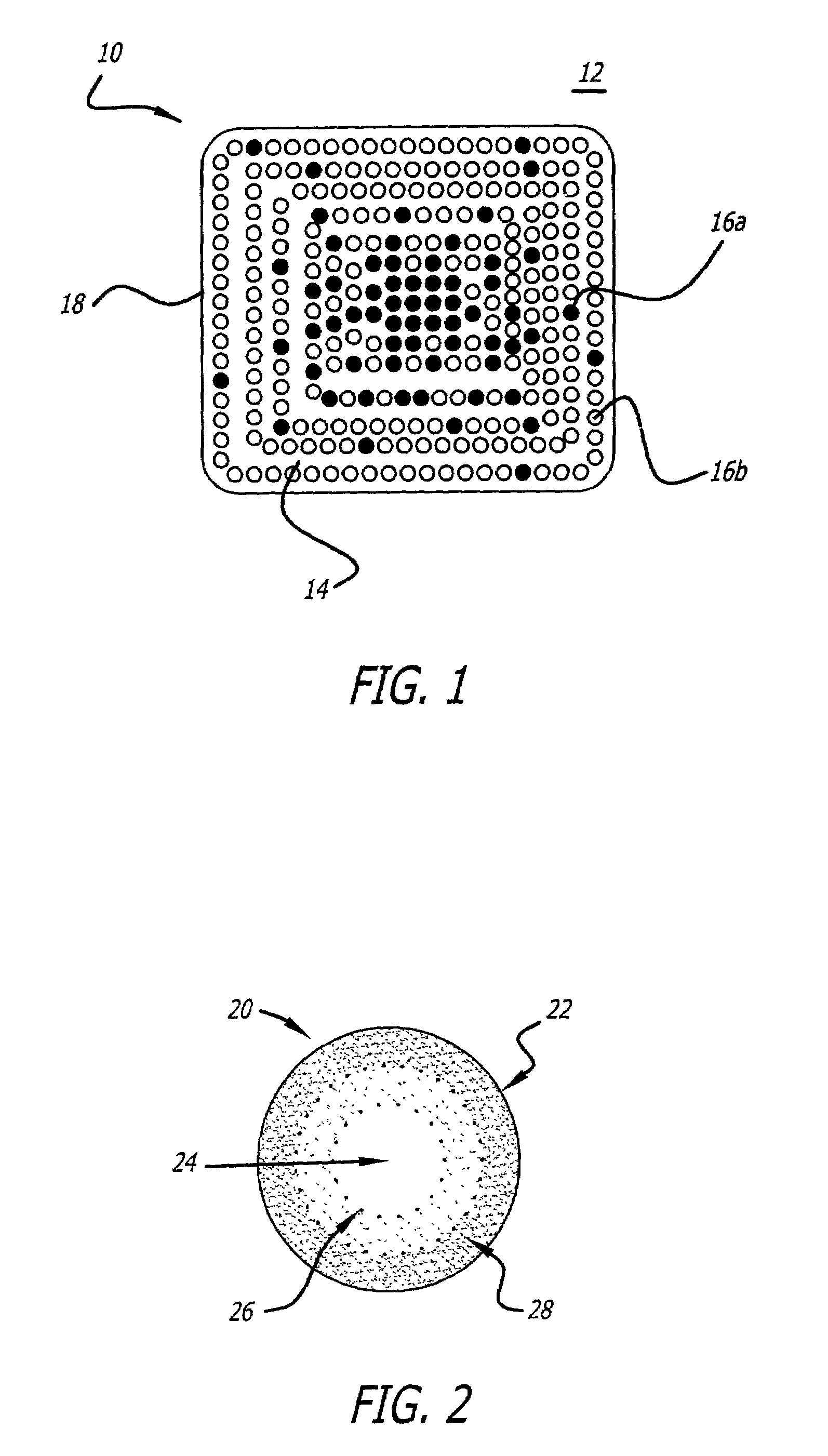Solid-state devices with radial dopant valence profile
a solid-state device and valence profile technology, applied in the direction of active medium shape and construction, laser details, active medium materials, etc., can solve the problems of low production yield, low production yield, and variations in lasing threshold and efficiency, so as to improve mode discrimination, improve brightness output, and reduce beam divergence
- Summary
- Abstract
- Description
- Claims
- Application Information
AI Technical Summary
Benefits of technology
Problems solved by technology
Method used
Image
Examples
Embodiment Construction
[0034]While the present invention is described herein with reference to illustrative embodiments for particular applications, it should be understood that the invention is not limited thereto. Those having ordinary skill in the art and access to the teachings provided herein will recognize additional modifications, applications, and embodiments within the scope thereof and additional fields in which the present invention would be of significant utility.
[0035]FIG. 1 is a cross-section of a generic, solid state, laser light control device fabricated in accordance with the teachings of the present invention. The device 10 consists essentially of a solid-state host material 14 which contains: a dopant species 16 at a first valence state ‘a’, the concentration of which increases with distance from the surface 18; and the same dopant species 16 at a second valence state ‘b’, the concentration which decreases with distance from the surface 18. This device 10 is produced by exposing the sol...
PUM
 Login to View More
Login to View More Abstract
Description
Claims
Application Information
 Login to View More
Login to View More - R&D
- Intellectual Property
- Life Sciences
- Materials
- Tech Scout
- Unparalleled Data Quality
- Higher Quality Content
- 60% Fewer Hallucinations
Browse by: Latest US Patents, China's latest patents, Technical Efficacy Thesaurus, Application Domain, Technology Topic, Popular Technical Reports.
© 2025 PatSnap. All rights reserved.Legal|Privacy policy|Modern Slavery Act Transparency Statement|Sitemap|About US| Contact US: help@patsnap.com



